
Moʻolelo
This fall, Punahou revealed a captivating collection of mosaic art that now adorns the Leadership Donor Wall, nestled within the Oculus spiral stairwell at the heart of the Sidney and Minnie Kosasa Community for Grades 2 – 5. Inspired by the imaginative drawings of our young artists, these mosaics tell the narrative of Punahou and Hawai‘i. The project was spearheaded by Punahou’s kumu Ike Hawai‘i and ceramic master Leah Kilpatrick ’86 Rigg, who recognized the intrinsic beauty within the children’s creations and translated their vision into breathtaking works of art. There are 10 stand-alone mosaics and a tryptic in the center – each piece a testament of creativity and love for the School that will be enjoyed for generations to come.
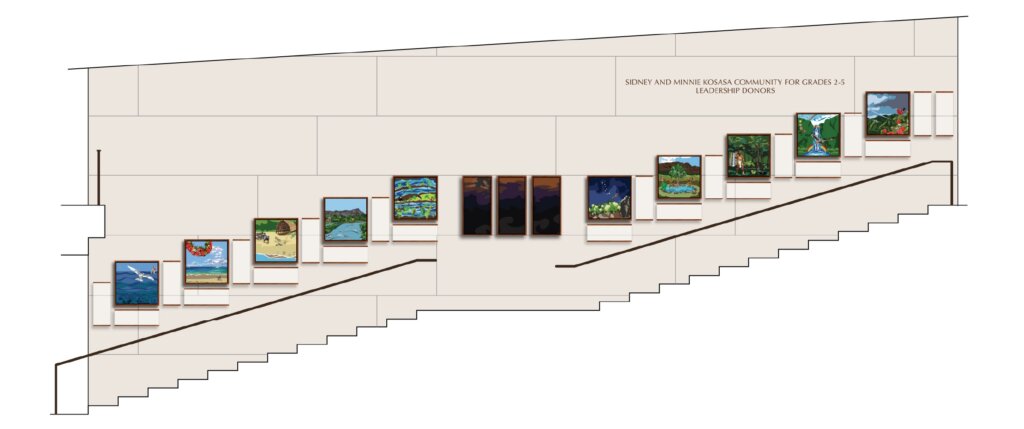
— Mosaics —
1
Akaaka (“Clearly seen”) married Nālehuaakaaka (“The lehua of Akaaka”), and together they had a set of twins, a boy and a girl.
Akaaka can still be seen in the mountains in the back of Mānoa Valley as the largest mountain spur and Nālehuaakaaka nearby. Hōkūpa‘a, the North Star (Polaris), can be seen high above the Akaaka mountains in the northern sky. ‘I‘iwi, with their red plumage, play and feed upon the scarlet ‘ōhi‘a lehua blossoms in the upland Mānoa forests.
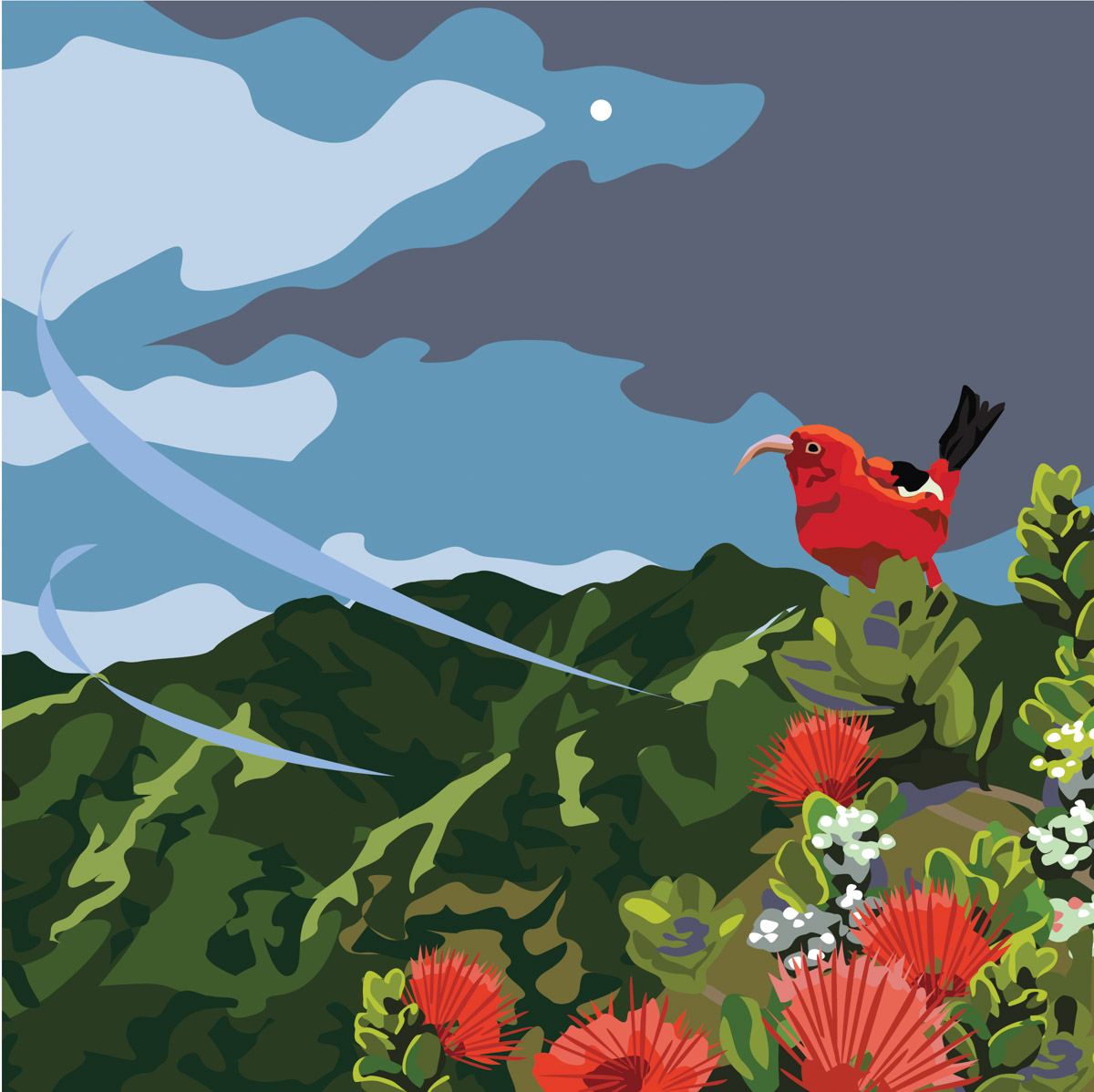
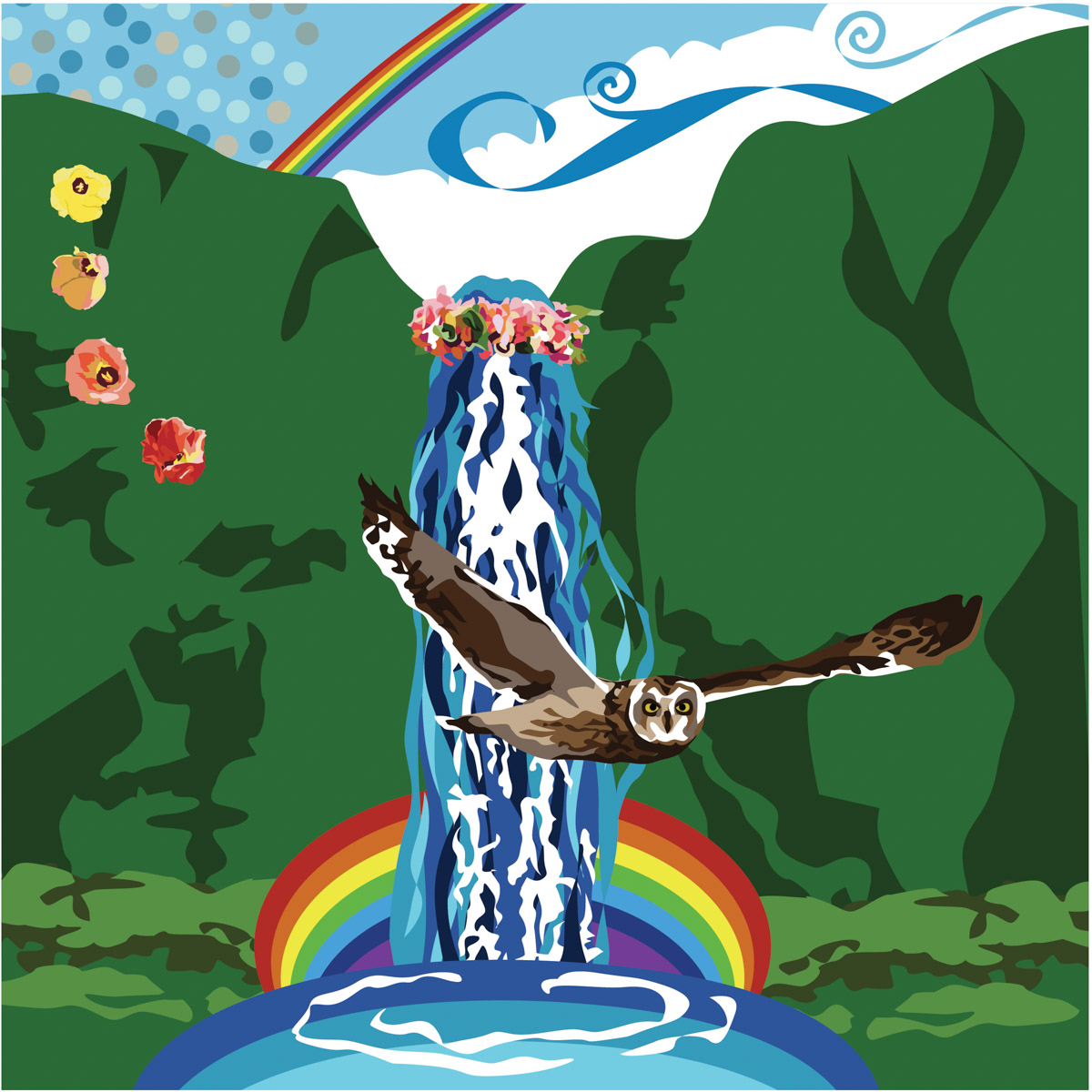
2
Kahalaopuna (“The hala of Puna”), is a beautiful daughter of Akaaka and Nālehuaakaaka.
Wherever she goes, a rainbow is in her presence. She is known to be the “rainbow goddess of Mānoa” and the girls of Mānoa are said to inherit her beauty. Groves of hau trees abounded in Mānoa with its hibiscus-like blossoms. Among the forest trees is the abode of the pueo, the Hawaiian owl. Kahalaopuna has as her guardian, an ‘aumakua, a faithful pueo that protects her. As the story is told, she is saved from the treachery of Kauhi, an ill-tempered suitor, by this ‘aumakua.
3
In the forests stand mighty koa trees that are prized for creating canoes. The kahuna kālai wa‘a, the priestly canoe carver, dons a white malo (loincloth) as a sign of his holiness.
He carries a ko‘i, an adze, that will be used to fell the selected tree. An ‘elepaio bird will lead the kahuna kālai wa‘a to a good tree, for a tree with bugs is not a good choice. Hāpu‘u tree ferns, situated in the direction of the tree’s fall, will cushion its long and heavy descent to the ground. Permission from the gods of the forest must be granted before any plant can be removed. To appease the gods, a pua‘a hiwa (unblemished black pig), niu hiwa (black-shelled coconuts), and ‘awa (kava) will be prepared especially for them and offered with appropriate prayers.
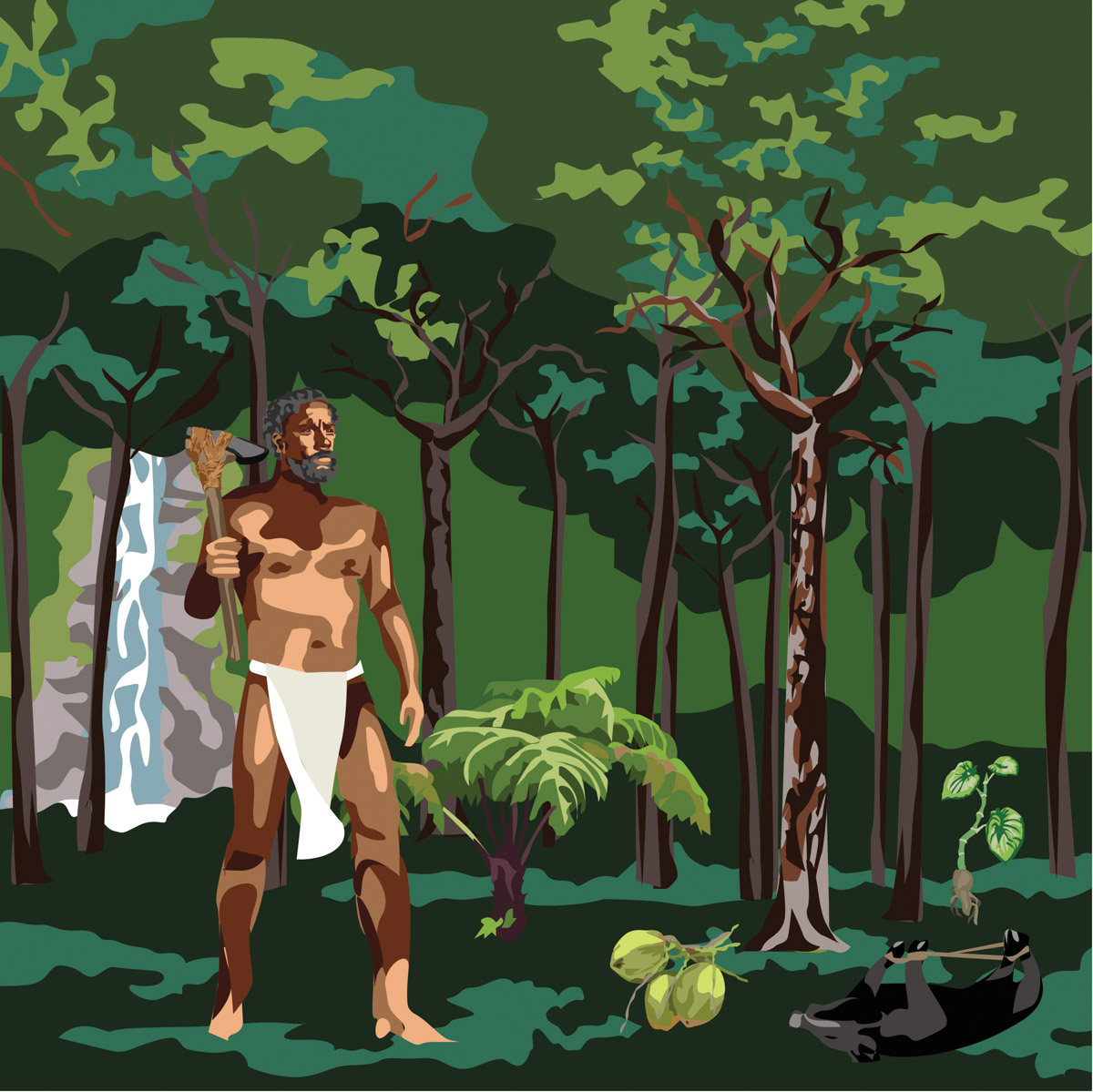
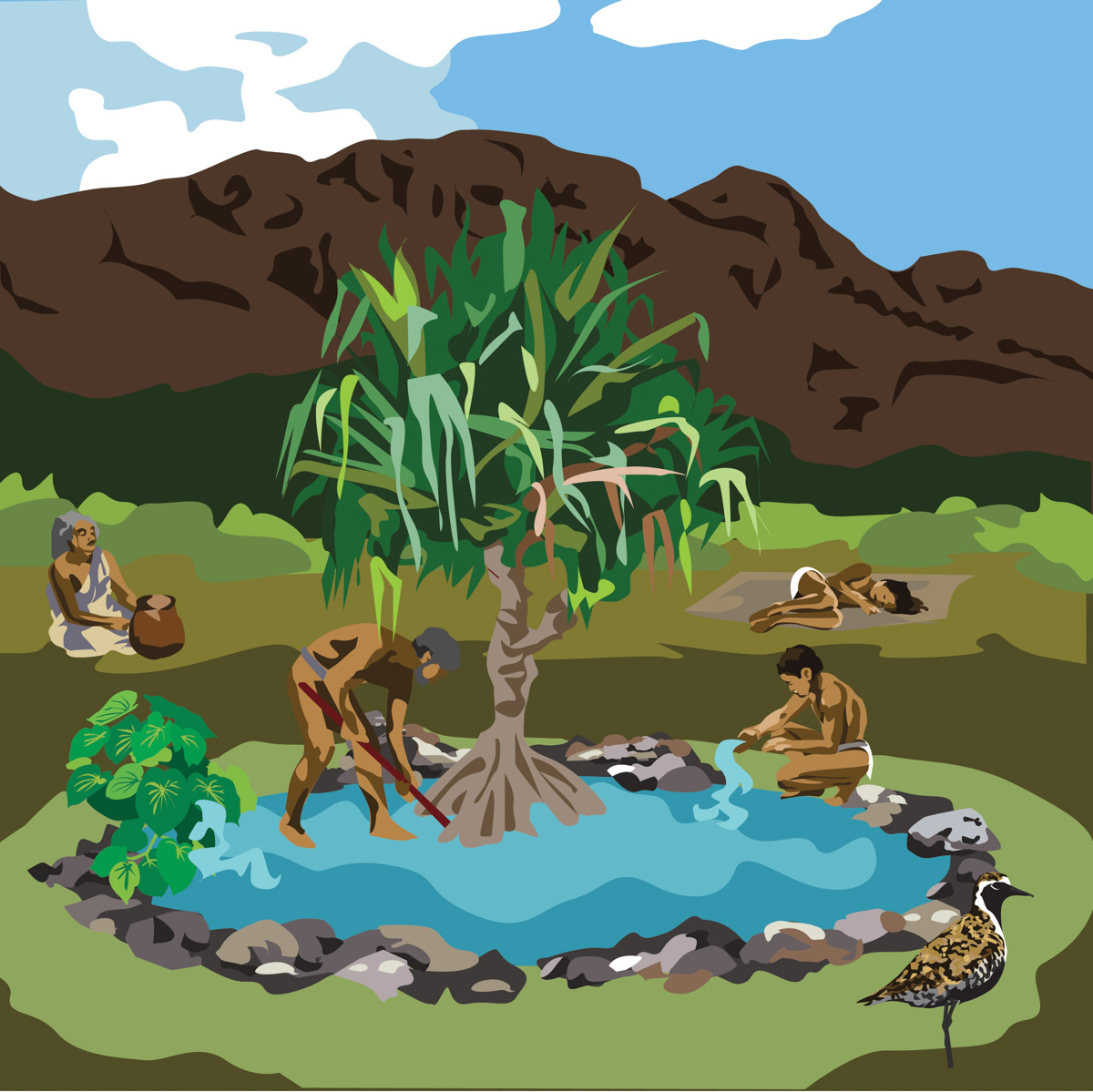
4
Kāne, the god of freshwater and humankind, is offered the gift of ‘awa in thanks for all of his gifts.
In dreams, Kāne tells Mūkākā and his wife, Kealoha, that there is a spring under the pūhala (pandanus tree) by their home below Kaha‘akea (commonly called “Rocky Hill”). The same place where Kauawa‘ahila and his sister, Kauaki‘owao had made their home long, long before. The mo‘o (dragon god) of the healing waters of Kānewai are united here at Kapunahou, “the new spring,” that was once hidden under a pūhala. The kōlea (golden plover) will find its way back each year to find refreshing water at Kapunahou.
5
Fronting Punahou School is the historic Ka‘ahumanu Wall, the only remnant of this once miles-long feat of construction.
Ordered to be built by Ka‘ahumanu, this wall afforded protection of precious farmlands from feral horses and cattle that roamed freely around Honolulu. Crowning the wall is the pua pānini o Punahou, the night blooming cereus. During the summer season they open their white, chalice-like blossoms into the darkness of night and have become a spectacle visited by kama‘āina and visitors alike. The constellation Nāhiku (Big Dipper) stands watch in its rotation towards Hōkūpa‘a as the ‘ōpe‘ape‘a (native bat) flits among the nocturnal blossoms to pollinate them.
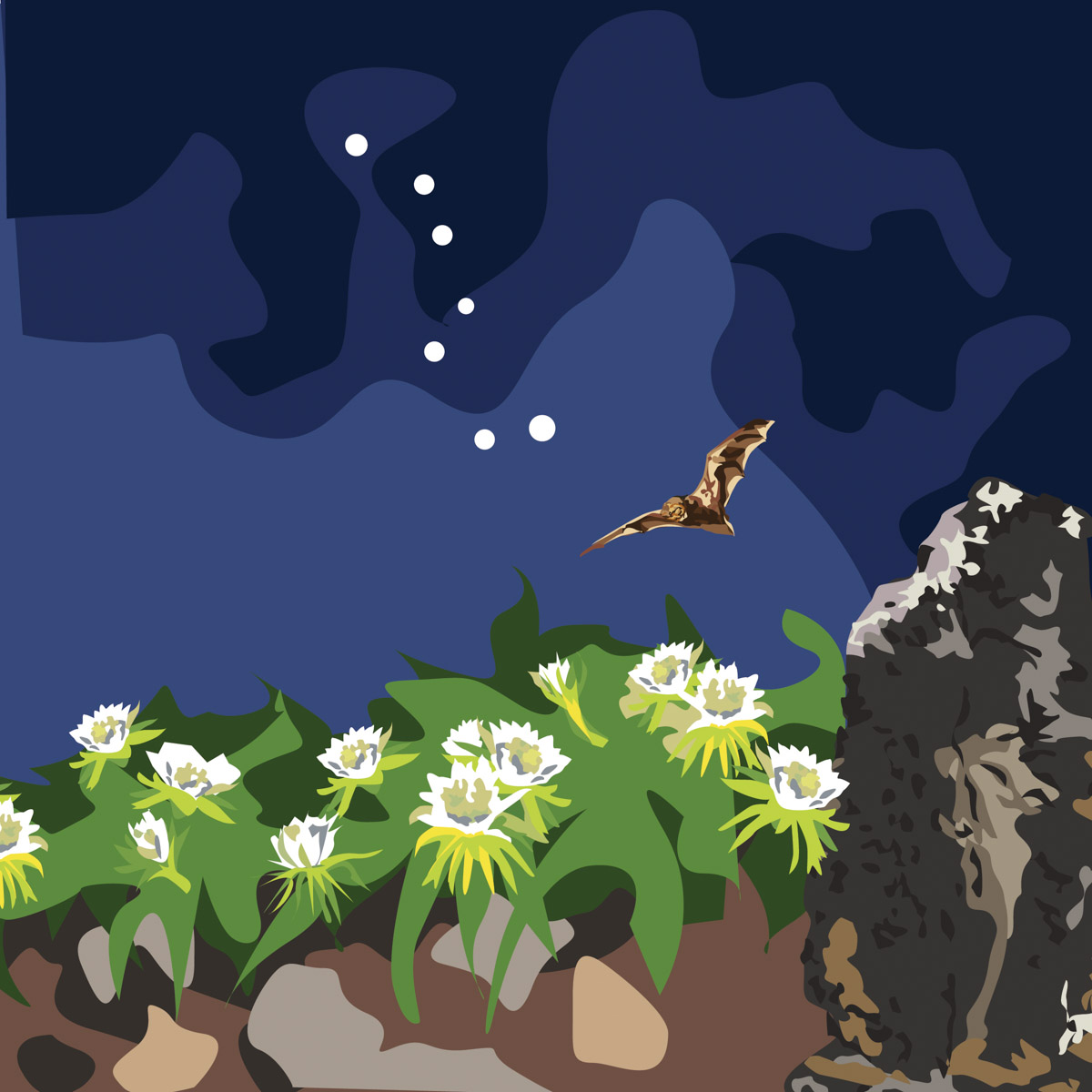
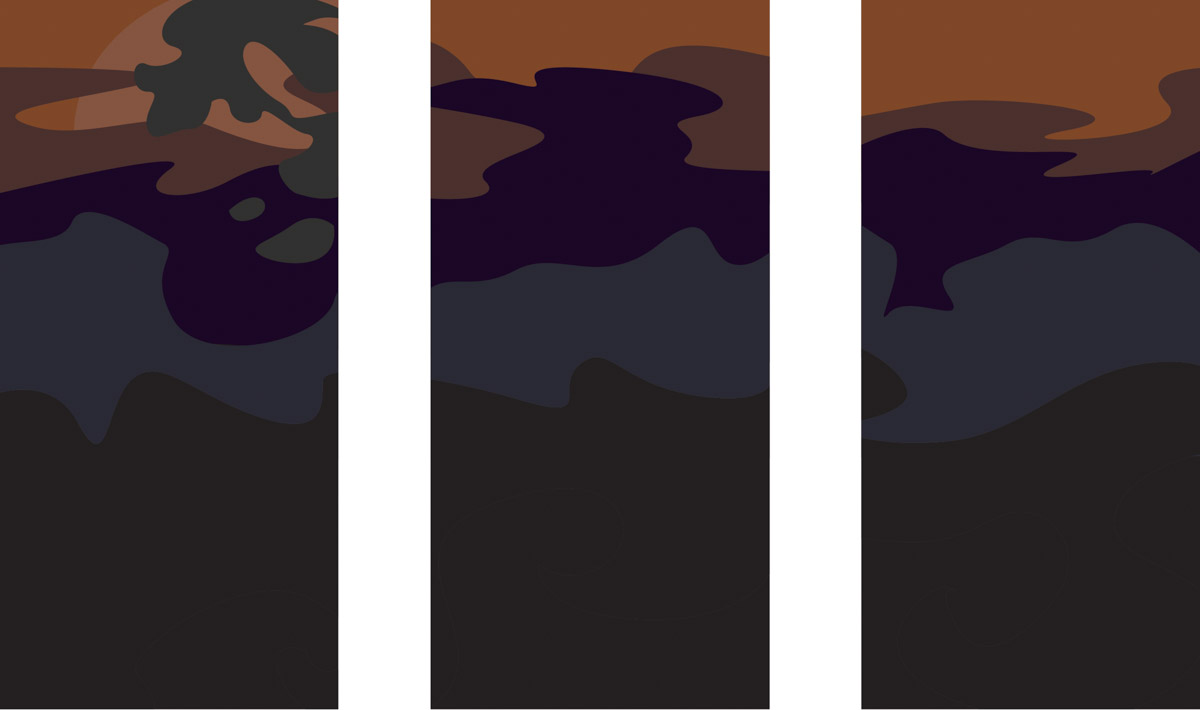
Center
The trio of mosaic panels depicting the swirling colors transport us to a time described in the “Kumulipo” when total darkness was unadulterated.
It is a proverbial saying of old that all of creation emerged from within the realm of this darkness: No ka pō mai nā mea a pau. The light of Wākea had penetrated it heralding the birth of life in its many forms. Papahānaumoku, “Mother Earth giving birth to the islands,” is a viable, visible and vital testament to the miracle of life.
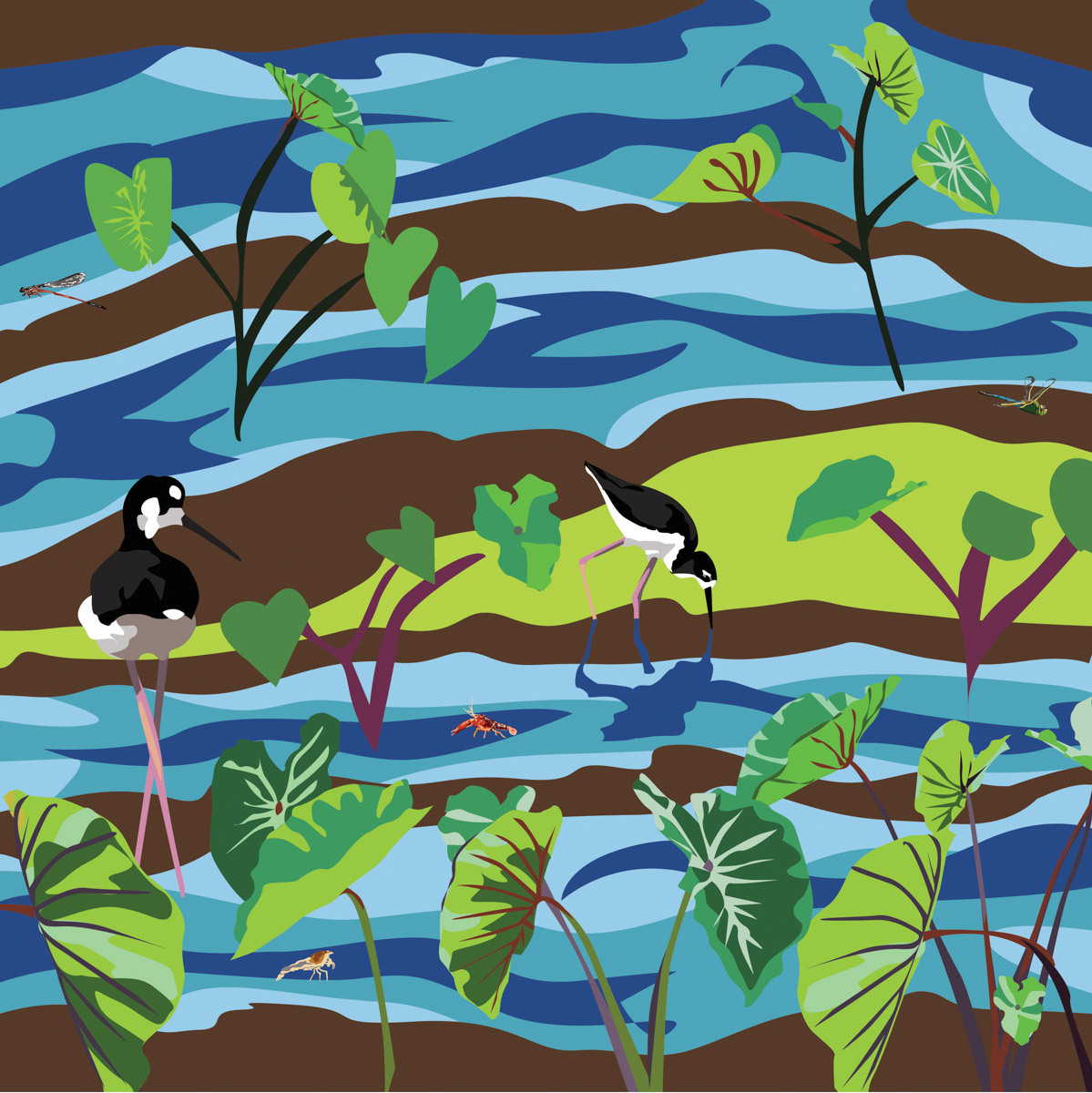
6
Mānoa’s blessings of its waterfalls, streams, springs and brooks have poured into countless lo‘i kalo, wetland taro patches that used to cover the wide valley floor.
Meandering in the lo‘i kalo were found the ‘ae‘o, the Hawaiian stilt. ‘Ae‘o loved to forage the lo‘i kalo to find its food such as small fish, worms, shrimps, dragonflies and damselflies. Today, with the establishment of lo‘i kalo on the lands of Kapunahou, we have seen the return of the a‘eo and the many small creatures they love to feed on.
7
From the valleys of Mānoa, Makiki and Pālolo flow their own streams that meet and mingle to form the ‘Apuakēhau Stream.
This stream finds its way into Waikīkī. Waikīkī (“Spurting water”) was a hot spot for thriving lo‘i kalo. In its waters thrived ‘ōpae (shrimps), ‘o‘opu (goby fish), wī (freshwater shellfish), and the fingerlings of āholehole, ‘oama, moi, manini, pāpio, and ‘ama‘ama. ‘Auku‘u (night heron) loved the lo‘i kalo wetlands and found themselves at home here.
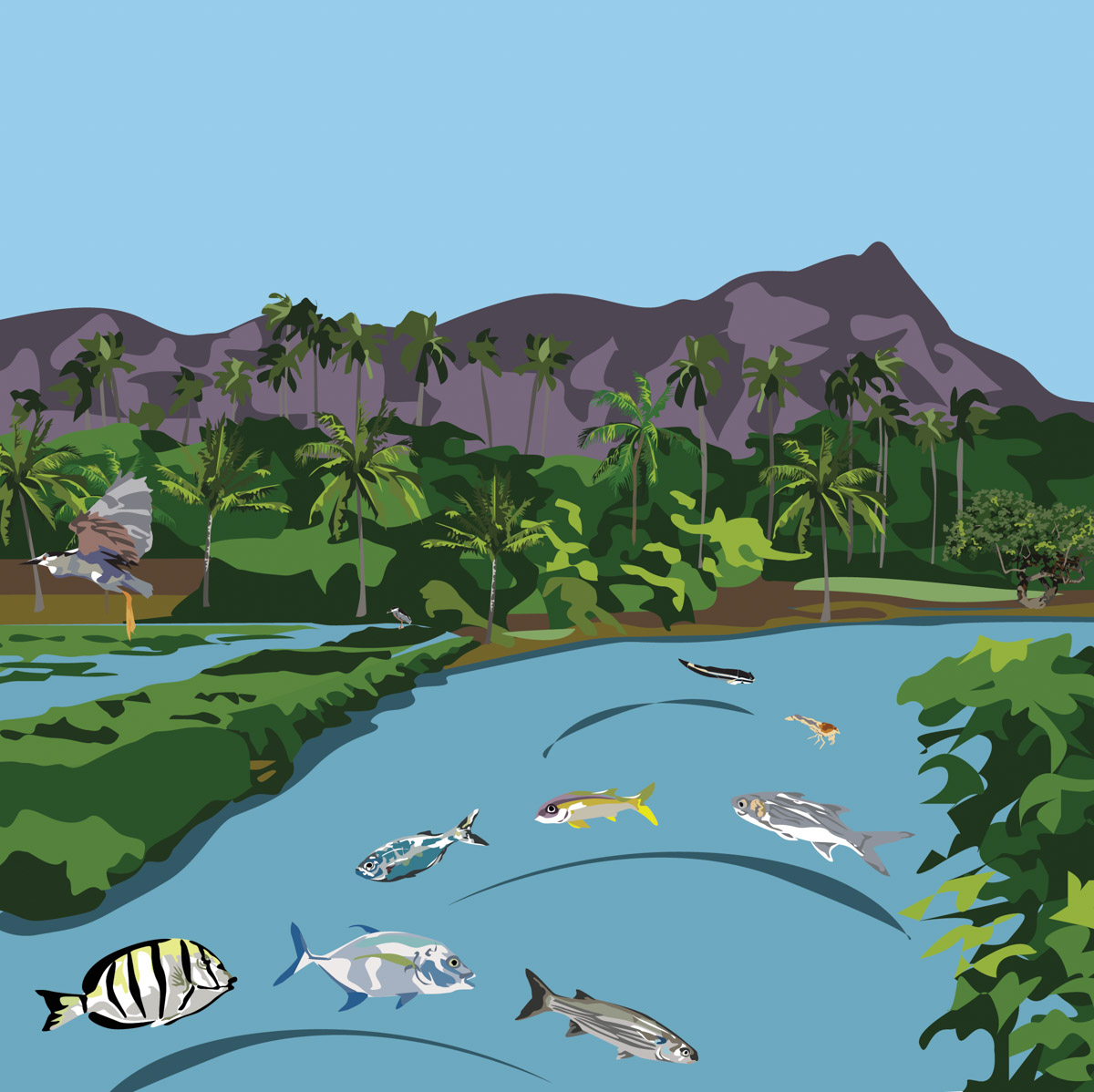
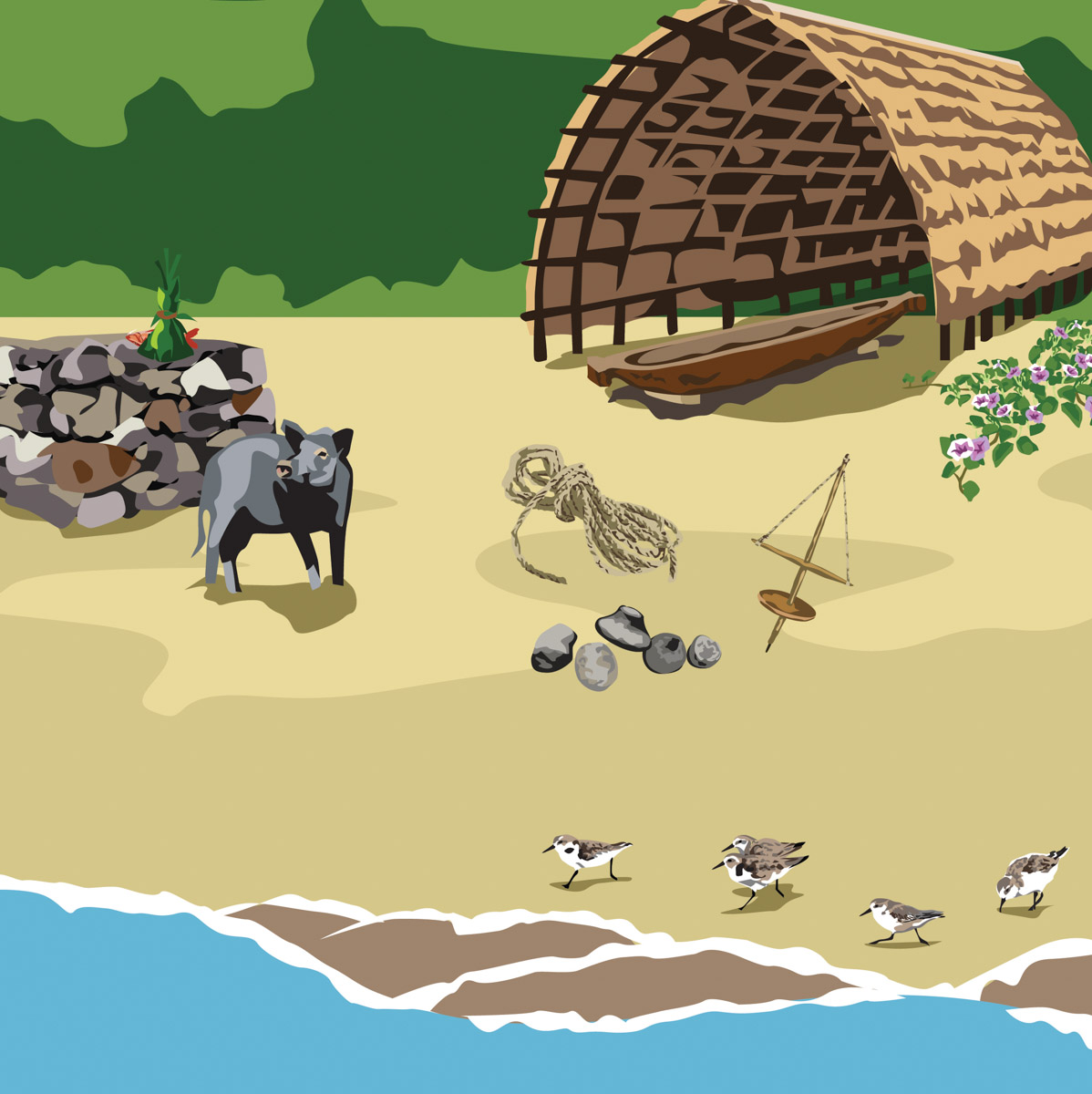
8
After months of prayer and careful craftsmanship, a prized canoe would be sheltered in a hālau wa‘a (canoe shed).
Naowili, drill bits, cleanly bore through the impressive koa wood. Its parts would be expertly lashed with ‘aha, coconut sennit cordage, and polished to a luster with pōhaku ‘ānai wa‘a (polishing stones). The protection of the canoe would be relegated to the gods with prayers and offerings of pua‘a hiwa, red kumu fish and choice ‘awa. The meandering of purplish-flowered pōhuehue (beach morning glory) and its cousin, the white-flowered hunakai, shared the shoreline with the canoe.
9
Kalehuawehe (“Relinquishing lehua”) at Waikīkī commemorates the occasion when the high chief Pi‘ikoi took his lei of lehua off from himself and gave it to a chiefess who had joined him surfing.
One of Punahou’s resident ducks was found by one of our students in the adjoining sea along our storied shoreline. Our new addition answers to the name of “Su Yong,” and now happily resides with other feathered friends here at the kīpuka (urban-oasis) that is Kapunahou.
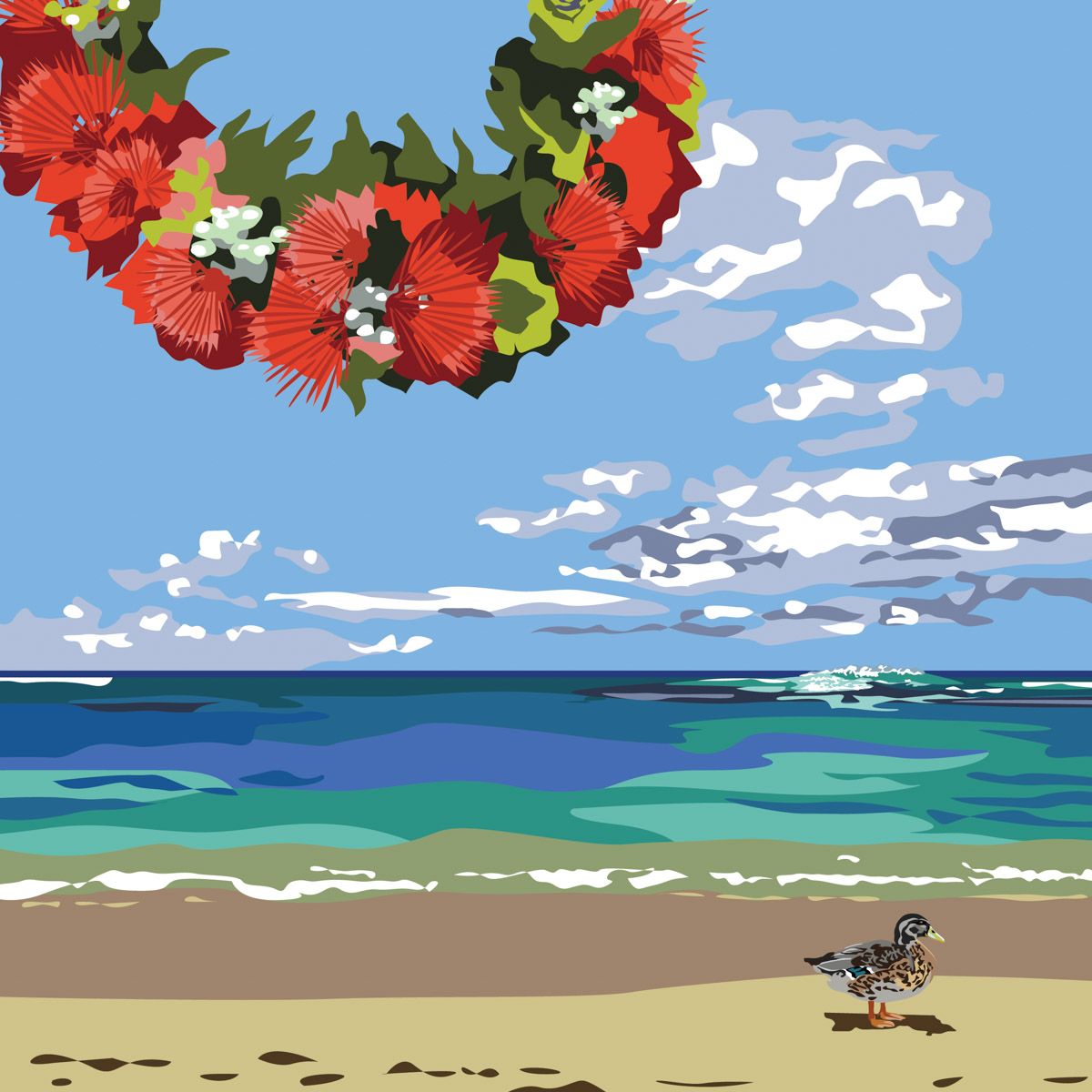

10
Our vast Moananuiākea (Pacific Ocean) does not separate us as peoples who live on individual islands. Instead, it connects us as residents of one-ocean.
Wa‘a kaulua (double-hulled canoes) have traversed this ocean’s watery roadways for hundreds of years. A canoe that knows navigation using Newe, the Southern Cross, and Hōkūpa‘a, can always find its way to these oceanic islands and back home, to Hawai‘i. Cloud formations, wind and ocean currents are faithful guides also. The Manuokū make long flights in search of the bounties of the sea. Sighting this bird is a welcome sign to a deep-sea voyager that an island, and landfall, are within the reach of both time and space.
